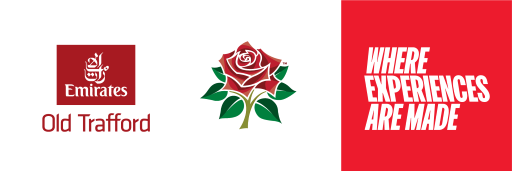It’s a given that workplaces should support women. But how can we encourage men, and foster positive masculinity, making the workplace better for everyone? Peter Crush reports on a recent HR Magazine article…
“It’s only been the last decade or so that I’ve been comfortable talking about my masculinity,” says an extremely candid Chris Britton, people experience director for employee benefits provider Reward Gateway. As the son of a prison officer, and someone whose formative years were shaped by the Troubles in Northern Ireland, Britton is the first to admit that cues about what manhood was sparked deep anxiety.
As he found himself in university and then the workplace, a lack of trust in people eventually caused depression. “I never felt I was my dad’s image of a stereotypical man,” he adds. “I became a closed book; I didn’t think I could talk about how I felt.”
Marriage and fatherhood have both changed things considerably. But Britton – who last month launched a podcast called Hu-Man Up, specifically to get men to open up about their feelings more – says he still feels deeply that the task of employers to role model a better version of manhood is only just beginning.
“Ironically, I wonder whether men actually feel excluded from the diversity, equity and inclusion (DEI) conversation,” he opines. “Masculinity is so often associated with ‘toxicity’; but I sense progress about male inclusion has plateaued because there are other things stopping men talking – like fear of being cancelled, or not talking about a topic for fear of being judged. Are we excluding men,” he ponders, “by trying too hard to be inclusive?”
This irony is not lost on others. Bertie Tonks, HR magazine’s Most Influential practitioner 2023, says: “People like me – white men – are almost labelled part of the problem. It means that if we [men] feel we can’t cope, we’re under pressure to hide it.”
Away from toxic-masculinity to foster positive masculinity
Sarah Evans, director of workplace consultancy Discovery, adds: “The fact young men especially are being radicalised into having anti-feminist views. These are seen where men feel women advance due to quotas, means we’re seeing a type of ‘hyper-masculinity’ too.” Tonks adds: “Men are struggling emotionally, but there’s real societal pressure and stigma to speak up, and not enough channels for men to let off steam.”
The evidence of these conflicted times are record levels of depression and male suicide rates. Accompanying this is a growing acceptance that ‘positive masculinity’ must instead be a vision that DEI policies embrace.
“Positive masculinity is everything toxic masculinity isn’t,” suggests Helen Villiers, co-author of You’re not the Problem: The impact of Narcissism and Emotional Abuse and How to Heal (Hachette Go, 2024).“It’s redressing the balance, allowing men to be vulnerable, such that equitable workplaces are created for everyone.”
Georgina Kelly, founder of the Women in HR network, agrees: “Female empowerment doesn’t happen without education and support for men. Remember, women also try and role-model male behaviours too. But at root, measures must be offered to allow men to be able to say they feel vulnerable, and are not blamed.”
Villiers adds: “Businesses need to normalise people using emotions in their language – and without shaming men. Only then do we see emotional growth and good behaviours modelled.”
Because male toxicity is complicated though, the path to positive masculinity is not, experts agree, straightforward either. “If we’re going to have organisational change, it certainly needs to come from men, not because they’re being told off, but because they want to change,” observes psychology and neuroscience expert, Dulcie Swanston, founder of Top Right Thinking.
“Diversity or unconscious-bias training is well-intentioned but won’t stick when we understand men are wired to prefer other people that look like them,” she says. “When men congratulate women but still privately think they’re not capable, bigger forces are needed.
“Toxicity becomes embedded when people stay with the crowd and don’t say anything, so training needs adding to by leaders role modelling this. Action only happens when people with power join with those who do not.”
As Kelly puts it, “behaviour change, and not just giving staff access to an EAP,” can be leveraged at key points such as at fatherhood, by promoting paternity leave (still widely under-used) and providing safe spaces for conversations around the support that men might need in this transition period. Geraldine Gallacher, CEO of The Executive Coaching Consultancy, observes: “Parenthood is a ripe time when the gender debate comes to the fore, and where men are finding their space.”
Male caring responsibilities need to be normalised to foster positive masculinity at work
One man at the forefront of this has been Elliot Rae, former head of DEI delivery at HM Treasury, who three years ago launched the Parenting Out Loud workplace culture change programme. It aims to normalise male caring in the workplace and role model this behaviour for others, to build a workplace culture where dads can parent loudly.
“We typically find that talking about parenting becomes a gateway to including men into further diversity and inclusion conversations,” he says. “It’s about breaking the prevailing view that men can’t bring their challenges to the workplace.”
At his own organisation, Collinson, an employee engagement and benefits business, Tonks says he’s introduced access to an in-house counsellor (once a month, “always over-subscribed”), ‘listening circles’ at which men can come together and talk about personal health, stress and personal struggles – and scheduled manager-staff wellness conversations. This creates healthier, more respectful at-work relationships, he reports.
For Gareth Cartwright, colleague experience leader at Hodge Bank – part of a sector with a legacy of attracting ‘alpha male’ types – it’s precisely by being intentional about having conversations about masculinity that cultures can change. At Hodge, this includes having performance reviews that focus on behaviours, and a focus on how goals have been met, rather than tolerating meeting goals by bullying or other unacceptable behaviour.
He says: “Colleague alliance groups continually feed back on colleague experience. But while we encourage people to call out bad behaviour, we also want to allow people to feel that it’s okay to say they don’t understand a particular perspective. That’s often the first hurdle people need to overcome.” He adds: “This is what helps people feel comfortable being vulnerable, and willing to learn and grow together.”
Providing ‘allyship’ and workplace allies is often suggested as another meaningful intervention. All of the HR directors that HR magazine spoke to run some form of allyship, where leaders amplify, and advocate positive behaviours.
Cheryl Samuels, people and culture director at the Evelina London Women’s and Children’s clinical group, says that much of the work she does is about breaking the habit of men feeling like they have to live up to certain stereotypes. This can come about through health awareness and encouraging men to get active, as physical activity is an area where men often talk to each other and develop support networks.“Because societal norms are so strong, breaking habits and just getting people to talk about anxiety and depression can open up a lot of other avenues,” she says. “From this, we can then role-model inclusive behaviours. Part of all this is simply making men feel more included.”
Among the many benefits employers could offer is Ripple, a specific mental health awareness platform that recognises when harmful content related to self harm and suicide is being searched for on browsers. Founded by Alice Hendy MBE, who lost her brother to suicide, the technology can be deployed over a corporate wifi.
If anyone is undertaking internet searches that suggest they are considering self harm, signposts pop up with help they can access. Since launching, nearly 50,000 searches have been intercepted, and more than 30 lives have been saved, Hendy claims.
“Our traditional sense of masculinity means things get bottled up,” says Hendy. “Admitting a need for help is often viewed by men as a sign of weakness when it should be a sign of strength. Our ultimate aim is for people to feel comfortable at work.”
Giving men avenues to open up will, experts argue, spur improvements around related topics such as addressing sexual harassment at work, and greater tolerance towards those who declare themselves non-binary or trans. “Men are also line managers and leaders, and so bringing them into debates about masculinity and equality has a direct link to issues such as better female representation, bias and other areas,” says Rae.
Gillian Jones-Williams, who devised and runs the award-winning international RISE Empowering Women’s Development Programme, agrees: “We also run this programme for men, and on one I recently did, a man literally announced, for the first time, that he had ADHD. He had never been brave enough to mention it before.”
She adds: “Generally, we find men are respectful, but feel tarred with the brush of masculinity. They just need the permission to be able to say some behaviours are not okay.”
Some might argue, of course, that sex should not even feature, and that real success will be when organisations simply talk about what’s right and wrong rather than what’s right and wrong for men and women. “One day we’ll just talk about preferred behaviours,” argues Gallacher. “There are behaviours, not genders,” she insists. “Women can bully too.”
Mark Gallagher, HR consultant for Han Law, adds: “HR has strategic and operational responsibility to build a culture that values equality and diversity, with an awareness of the importance of equal opportunities and pay for everyone. As such, white heterosexual males mustn’t automatically be stereotyped as potential wrongdoers.”
Britton wonders whether the phrase ‘positive masculinity’ is a turnoff. “Trying to spin negative masculinity into positive masculinity is actually to funnel men into another type of construct,” he suggests. “Maybe we should just be letting them be the best versions of themselves.”
He adds: “No one hates bad behaviour by men more than good men. We just need men’s peer groups to encourage men to have empathy around the shadow their behaviour casts. That’s about men accepting who they are, and that they can be positive role models – which is for everyone.”















